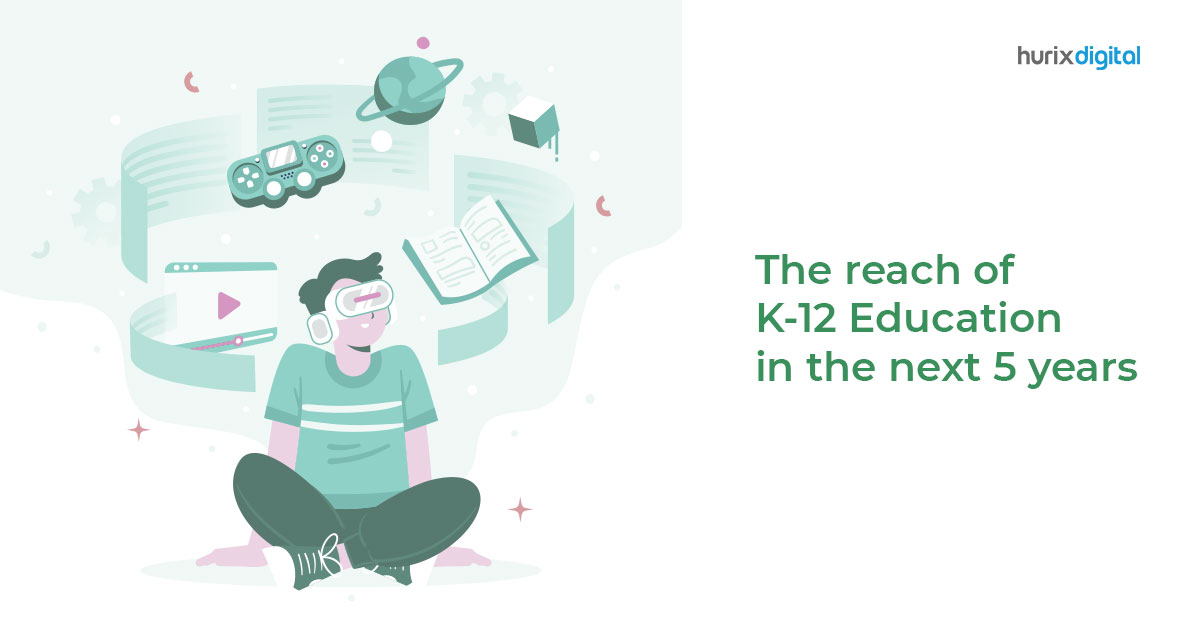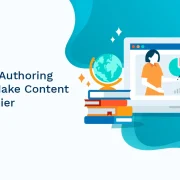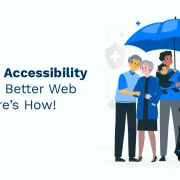
The Reach of K-12 Education in the Next 5 Years
Summary
This article looks ahead to the future of K-12 education, discussing the expected expansion of digital learning, the growing importance of accessibility, and the continued evolution of teaching methods over the next five years.
The COVID-19 pandemic, as tragic as it was, gave the K12 Education sector a significant boost, especially in the context of rapidly adopting new technologies for online learning. In 2019, the K-12 Technology Market was valued at USD 1.18 billion; in 2022, it was valued at USD 8 billion and is expected to reach USD 94.7 Billion by 2030.
Table of Contents:
- What Are Some Significant Changes We Can See in The K-12 Ed Tech Space in The Coming Years?
- How Are K-12 Edtech Companies Going to Drive This Change?
- What Are the Challenges K-12 Education Companies Could Face in The Coming Years?
- Conclusion
The future of K-12 education is rapidly transforming, and K-12 EdTech companies can expect significant changes in how students learn and teachers teach over the next five years. The education landscape is changing, thanks to new technologies and shifting demographics, and educators, students, and parents must be prepared.
What Are Some Significant Changes We Can See in The K-12 Ed Tech Space in The Coming Years?
Incorporating new technologies into the classroom is one of the most significant changes we can anticipate in the next five years. These technologies, ranging from Virtual and Augmented Reality to Artificial Intelligence (AI) and machine learning, will alter how students learn and teachers teach.
K-12 Education companies can use Virtual and Augmented reality, for example, to bring subjects to life and create immersive learning experiences that will help students grasp knowledge in ways that traditional textbooks cannot match. AI, on the other hand, with the help of data analytics, can be used to personalize learning and adapt to the needs of each student.
Another shift that we can anticipate in the K-12 EdTech industry over the next five years is a shift toward personalized learning. Rather than a one-size-fits-all approach, companies can use the power of AI and data and analytics to track an individual’s progress and tailor lessons based on the student’s needs and interests.
Students will be more engaged and motivated if they receive personalized learning experiences. Teachers, on their own, need help to achieve this level of personalized attention.
As the world becomes more globalized, so does the diversity of the student population. As a result, K-12 EdTech can anticipate an increase in English Language Learners (ELLs).
K-12 Education companies can use again bank of the power of AI and data and analytics to create personalized learning plans to teach a diversified population of students a new language in a manner that will help them most effectively.
How Are K-12 Edtech Companies Going to Drive This Change, and How Will They Adapt to These New Trends?
K-12 Education companies will be crucial in driving the changes in the EdTech space. Here are a few ways they can drive these changes over the next five years.
- Developing New Technologies – To meet the growing demand for new technology in the classroom, the K-12 EdTech industry will need to continue researching and developing new technologies such as Virtual Reality (VR), Augmented Reality (AR), and Artificial Intelligence (AI).
- Providing Personalized Learning Solutions – It is important to develop further and refine personalized learning solutions, such as Adaptive Learning Softwares or Learning Management solutions that can provide customized learning.
- Blended Learning Solutions – Even though a lot of the world has access to digital learning, a large chunk of the population may still need access to resources to pursue online education entirely. It is necessary to focus on blended learning solutions that combine online and in-person instruction until the industry can go fully digital.
- Mental Health and Wellness Resources – The focus on mental health and wellness has been gaining traction these past few years and will continue to do so in the future. K-12 education companies will need to develop and provide resources such as mental health and wellness programs and counseling services to support this growing emphasis on mental health and wellness in schools.
These are a few areas in which companies can drive changes in the years to come. These companies will have to innovate and create solutions that meet the ever-evolving needs of educators and students.
What Are the Challenges K-12 Education Companies Could Face in The Coming Years?
While technological advancements are exciting, challenges come hand in hand, and K-12 education companies need to be prepared to meet them head-on. Here are the two most significant challenges they will need to consider.
1. Training Teachers to Use the Latest K-12 Ed Tech Solutions
Teachers worldwide belong to something other than the digital era; most may not be digitally adept. Therefore, one of the primary challenges the K-12 EdTech sector will face is providing training to the teaching faculty worldwide on how to use the new tools. This includes ensuring they know how to use this new tech and be proficient enough to use it effectively to make the most out of it.
To address this challenge, professional development opportunities, and training will need to be provided for teachers. This could include workshops, online training, and mentoring programs. In addition, this training will have to be ongoing, not just a one-time event, as technology and teaching approaches are constantly evolving.
Moreover, just as with students, this training will have to be tailored to the specific needs of the teachers as well as based on their age, digital proficiency, specific subject areas, or grade level.
2. Addressing the Digital Divide
The digital divide, the gap between students with access to technology and those without, is another crucial challenge to consider. In addition, socioeconomic status and geographic location can play a significant role in whether students have access to technology.
One way to address this issue is by ensuring that all the solutions they provide can work flawlessly across multiple platforms equally, thus ensuring that students from weaker socioeconomic backgrounds who may not have access to the latest devices can still have access to the necessary materials required and will not have to struggle to keep up with their classmates.
Schools can also pitch in and invest in providing students with essential digital devices such as laptops or tablets or by giving free access to the internet. They can also go the extra mile by training students and parents to use new technologies effectively.
Summing It Up
The next five years will see many new technologies and teaching approaches in the K-12 EdTech landscape. By embracing new technologies, personalized and student-centered learning, and addressing the needs of a diverse student population, we can ensure that all students have access to a high-quality education.
That being said, K-12 education companies will also need to address specific foreseeable challenges, such as managing the digital divide and ensuring that teachers have the necessary training and support to be prepared for all the changes that will happen in the next five years.
Unlock the full potential of your institution with Hurix Digital’s Higher Education Solutions. Our innovative technology and expert team provide a comprehensive suite of e-learning tools and resources to enhance student engagement and improve retention with our easy-to-use platform.
Take the next step and contact us to see how we can best benefit your institution.

Performance, Results, Growth, and Life-Long Learning define my professional life. I am passionate about making workplace learning planful, purposeful, and impactful. I take pride in partnering with clients and bringing them the best in learning design and creating solutions that address business challenges.




